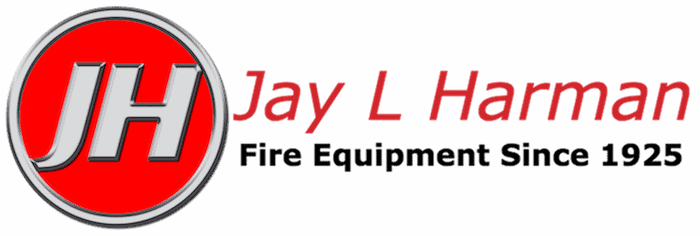When it comes to fire, commercial kitchens operate in a very high-risk environment. According to the most recent data from the National Fire Protection Association (NFPA), fire in eating and drinking establishments resulted in 110 civilian injuries and $165 million in direct property damage. Many of the affected businesses never recovered and had to close their doors for good.
Equipped with any number and combination of ranges, broilers, fryers and ovens operating at very high temperatures in close contact with fats, cooking oils, and other combustibles, commercial kitchens provide an ideal environment for fire. Not surprisingly, cooking equipment was responsible for more than 60 percent of the fires studied by the NFPA, underscoring the importance of following all fire extinguishing equipment requirements for the hoods, ducts, and cooking appliances used in commercial kitchens.
The NFPA 96 Standard for Ventilation Control and Fire Protection of Commercial Cooking Operations provides the requirements to help minimize fire risk and keep your employees and customers safe if a fire breaks out. The standards cover both automatic fire-extinguishing systems that provide primary protection as well as the portable fire extinguishers that provide secondary backup protection. Wet chemical systems are the most common type of automatic fire suppression system used in commercial kitchens today and are recognized by the fire protection industry as the most effective fire suppression system for commercial kitchens available.
This 4 part series will address 4 major areas associated with commercial kitchen fire safety regulations:
- Class “K” Portable Fire Extinguishers are Required
- Wet Chemical Fire Suppression Systems in Commercial Kitchens
- Installation and Operational Requirements
- Things to Know if You Modify Your Kitchen Set-up
Part 1 addressed the requirement for Class “K” portable fire extinguishers. This Part 2 will address Wet Chemical Fire Suppression Systems. Part 3 will address Installation and Operational Requirements for Wet Chemical Fire Suppression Systems. Part 4 will address requirements that must be satisfied if you modify your commercial kitchen set-up.
Wet Chemical Fire Suppression Systems in Commercial Kitchens
NFPA 96 requires automated fire suppression equipment for all grease removal devices, hood exhaust plenums, and exhaust duct systems in a commercial kitchen, as well as any cooking equipment that produces grease-laden vapors.
UL 300 Kitchen Fire Suppression systems are wet chemical fire suppression systems used to protect hoods, ducts, and cooking appliances from fire hazards. They are often referred to as “pre-engineered” systems, which means that they come from the manufacturer with specific specifications that are unique to that system. As such, their installation, repair and maintenance requires a properly trained and qualified technician that has been certified by the system’s manufacturer.
Wet chemical fire suppression systems work by releasing chemical agents that react with oil to create a thick foam that covers the entire cooking surface, smothering the burning oil until the appliance cools below the oil’s flash point. The effectiveness of these systems is not limited to fires that involve oil. The type of chemicals they use are very effective on all types of fires in a commercial kitchen.
NFPA 96 requires that wet chemical pre-engineered fire suppression systems meet the requirements of ANSI/UL 300 or other equivalent standards that include fire test methods and requirements to protect the various types of cooking appliances and tests to evaluate the ability of pre-engineered equipment to protect plenums and ducts.
Not all grease removal devices, hood exhaust plenums, exhaust ducts, and cooking appliances are addressed in ANSI/UL 300 or other equivalent test standards. If your kitchen uses equipment that isn’t, you must make sure that any non-listed automatic fire suppression system installed is appropriate for the grease removal devices, hoods, ducts and cooking appliances you’re using based on the system manufacturer’s recommendations. The system must also meet all applicable NFPA standard(s), all local building and fire codes, and must be approved by the authority having jurisdiction.
The Jay L Harman Fire Equipment team understands your firefighting needs and is ready to help
Jay L Harman’s DOT Hydrostatic Testing facility and equipment meet all NFPA requirements for the hydrostatic testing of self contained breathing apparatus compressed gas cylinders in addition to testing ABC portable fire extinguisher cylinders.
Jay L Harman is the best and one of the biggest firefighting equipment suppliers and service providers in the region, specializing in fire suppression systems, fire extinguishers, emergency lighting, fire hoses, hydrostatic testing and more. Serving El Paso TX, Las Cruces NM and the surrounding areas, we pride ourselves on buying local and hiring local whenever possible.
Jay L Harman Fire Equipment is your go-to distributor for OVAL low-profile fire extinguishers in West Texas and New Mexico.
Contact Jay L. Harman Fire Equipment in El Paso TX at 915-533-7021 or Las Cruces NM at 575-523-8880..
Since 1925, we have protected businesses throughout the area from the harms and hazards of fires. Every Jay L Harman technician is licensed and regulated by the Texas Department of Insurance State Fire Marshal’s Office. Each of these technicians continually receives the most up-to-date factory training and certifications by our manufacturers. Contact Jay L Harman Fire Equipment today. Let our friendly and knowledgeable staff tell you more about our fire suppression systems and help you find the ideal fire suppression system for your needs. Learn more about our full offering of fire extinguisher training, firefighting services, firefighting products, request a quote, ask a question or request additional information.
